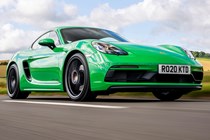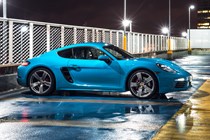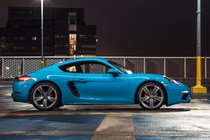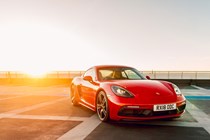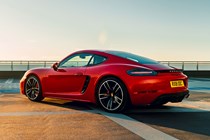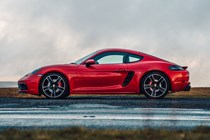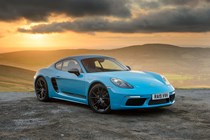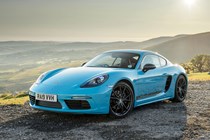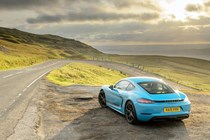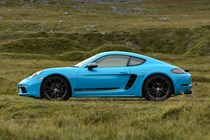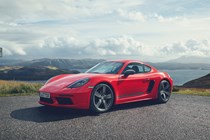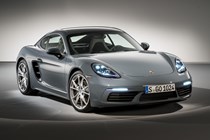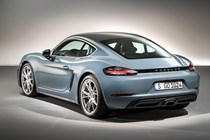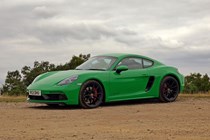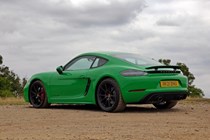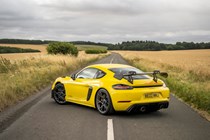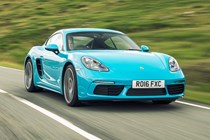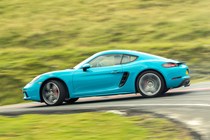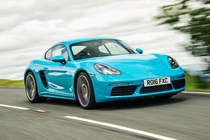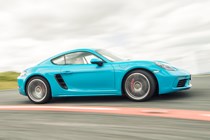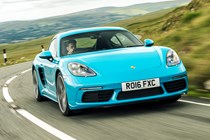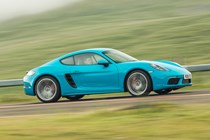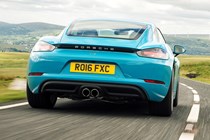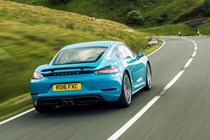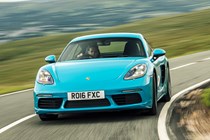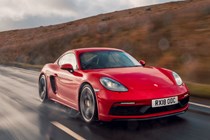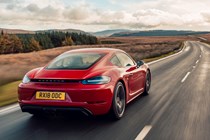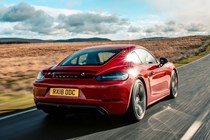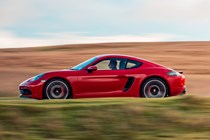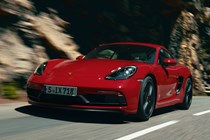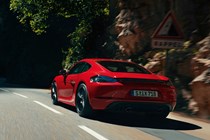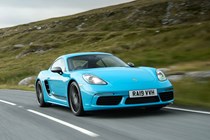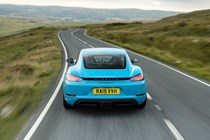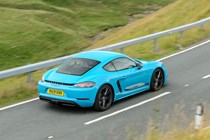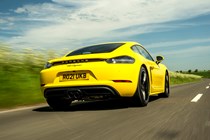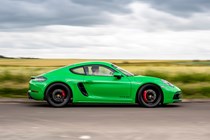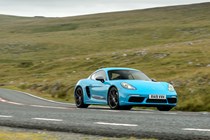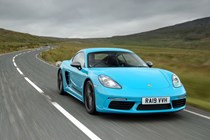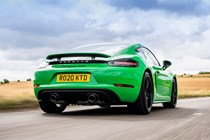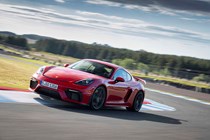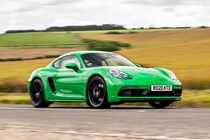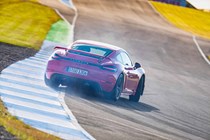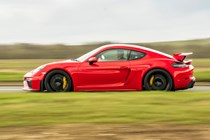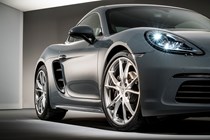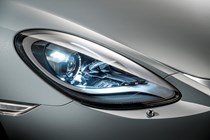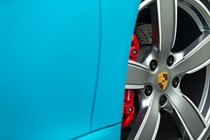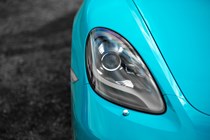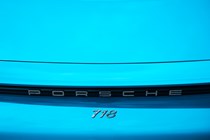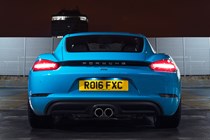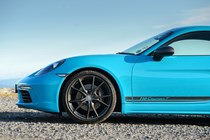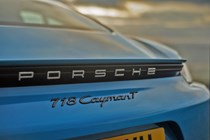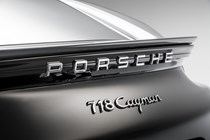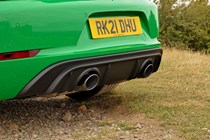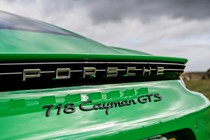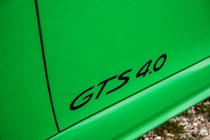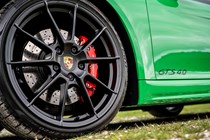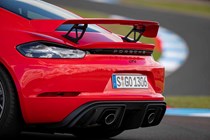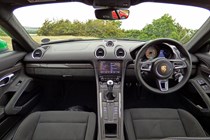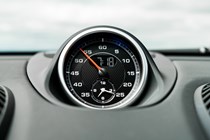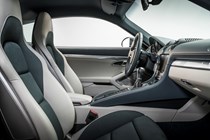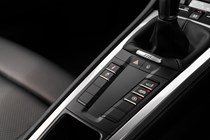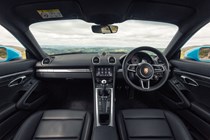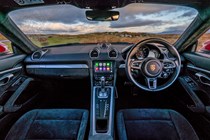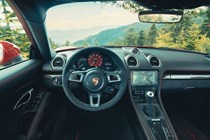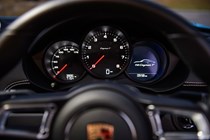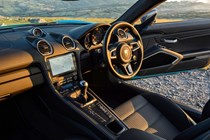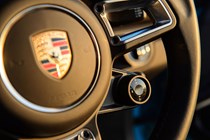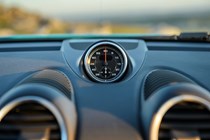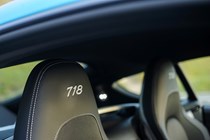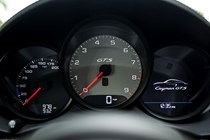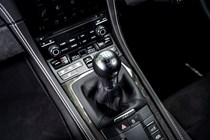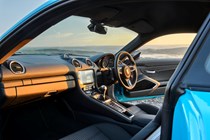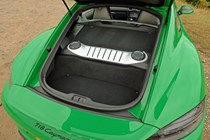
Porsche 718 Cayman engines, drive and performance

- Strong engines
- 2.0-litre entry-level loses out on sound
- Manual and automatic gearboxes available
It’s hard to believe the 718 Cayman is the cheapest car in Porsche’s range, given the huge performance levels on offer. You don’t have to go far back in the 911’s history to find models that accelerate slower than the Cayman.
View full Porsche 718 Cayman specs
2.0-litre
The base model gets a 300hp four-cylinder engine. It’ll still cover the 0-62mph dash in a sports car-like 4.9 seconds, but when compared with the rest of the range it’s pretty unremarkable. It’s methodical in the way it delivers power but never feels or sounds that exciting.
2.5-litre
Pick the more powerful Cayman S (with power upped to 350hp) and turbo lag (the delay in power delivery you normally experience as the turbocharger starts spinning) is even harder to detect.
It’s definitely fast (0-62mph in 4.4 seconds), but as it’s a four cylinder, it misses out on the whipcrack flat-six bark that has come to characterise generations of Porsches.
4.0-litre
A 4.0-litre six-cylinder non-turbocharged unit is offered with different outputs in the GTS 4.0, GT4 and GT4 RS models. It’s the engine to choose for hardcore driving enthusiasts because of its brawny power output and characterful engine note.
The main improvement over the other engines is in the power delivery. Throttle response is now what you’d expect from a Porsche and unlike the easy turbo power of the aforementioned models, the 4.0-litre needs a big hoof of gas to get going, with a full 5,000(ish)rpm before peak torque and a glorious, howling 7,800-9,000rpm redline, depending on the model.
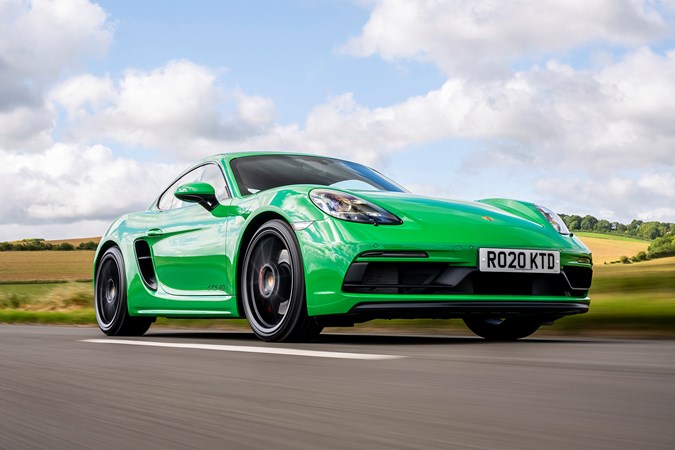
This being a Porsche means in reality you only bother the redline in second gear on the road, as it tops out over 80mph, so using all of third is an easy way to find yourself in front of a magistrate. And while these engines sound undeniably better than the four-pot cars, they’re not as vocal as previous six-cylinder Cayman models, largely down to a socking great gasoline particulate filter blocking its airways, unless we’re talking RS.
What’s it like to drive?
- One of the sweetest-handling cars on sale
- Sublime poise and handling overall
- Guaranteed to make you smile
This is a rewarding car to drive for both the enthusiast and the sports car newcomer. The poised balance provided by having the engine positioned amidships is the key to this agile handling, aided by rear-wheel drive. The 718 Cayman is seemingly plugged into your synapses, pointing into a corner the moment your brain sends messages to your fingertips.

Steering is well judged, quick and accurate, with no hint of the nervousness you’ll find in big brother the 911. The stiff suspension means the Cayman handles predictably flat on the road, with great poise in corners that isn’t easily upset by a lift or application of the throttle mid-bend, just predictable grip levels that are communicated via the wheel and driving seat.
It feels really friendly to use and instantly transparent from the first ten minutes of driving. This is not a car you need to dig into to find its limits – from the very first few miles it reveals everything you need to know – leaving little need for trial and error.
As such it can be driven in a number of different ways depending on your preference. Neat and tidy? That’s fine. Front wheels pinned and rears lit up? Also fine.
And the chassis is well set up for comfort. The suspension quashes bodyroll effectively and yet there’s real compliance here, even on the larger 20-inch wheels many buyers will spec.

We’ve tested both the six-speed manual and seven-speed PDK automatic derivatives and can attest it’s really down to personal preference.
The DIY choice is a pleasure to use and suits the character of the car well; but if you live in a city or prefer autos, we’d heartily support the PDK choice too. Gearchanges are quickly and smoothly carried out, and this version is actually cleaner and more efficient.
GT4 RS
The RS GT4 RS models build on that incredible base with a host of track focussed upgrades. Big spoilers, a fully panelled underbody and working rear diffuser are among the most noticeable upgrades.
The suite of extra aero, carbon bonnet and screaming engine had us initially concerned that the RS might be unapproachable for the common driver, twitchy and a handful to wrestle around, but it isn’t. Some trick active suspension management kept the GT4 RS grounded, while communication from the chassis through the carbon bucket seats was excellent. The ride was stiff but forgiving on B-roads – enough to feel connected to the tarmac, but not in fear that the next bump was going to spit us right off.
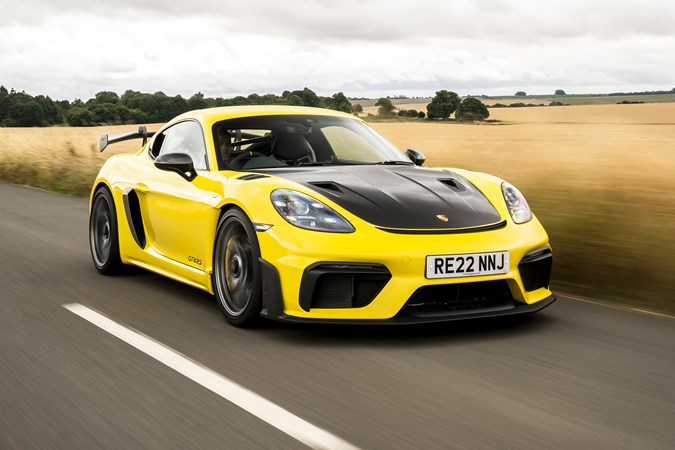
The steering wasn’t quite as darty as we were expecting, either. It was beautifully weighted, but with just a slight delay in sensitivity off centre, granted a moment’s thinking time for us to pick our line through corners.
With such a sweet balance it’s a car you can get in and drive hard without the experience granted by a racing licence, but don’t let us fool you into thinking the GT4 RS is anything but a screaming performance warhead. It may be approachable, but with screaming 9000rpm redline and all the induction noise you could ever want, it has the theatre value to send an electric shock up your spine every time you get in. Razor-sharp, violent and occasionally intimidating, but on your side and set up for anyone to extract as much as they can.
What’s odd is that these models offer a deep well of capability without compromising drama or the ability to thrill. It’s not a case of taming an unwilling machine, but being able to pick your line time after time and knowing exactly how the car will react. It’s predictable and well-honed, but isn’t benign. These models work less well on the road and cost a lot more, but they’re ultimately track toys that come with numberplates.


